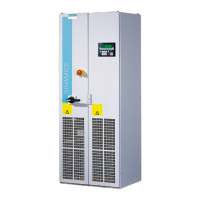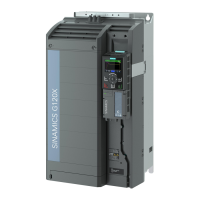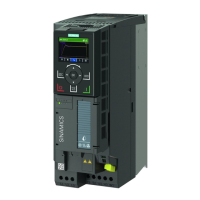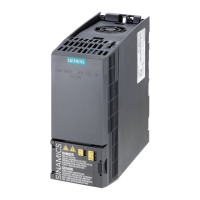4.11 Permissible speed of a synchronous motor
Requirement
CAUTION
Overvoltage in the converter due to driven synchronous motor
If a fault occurs, or after an OFF2 command, the load machine may continue to drive the
permanent-magnet synchronous motor. This causes the permanent-magnet synchronous
motor to charge the capacitor in the DC link of the converter. Above a certain charge, the DC link
voltage of the converter reaches an impermissibly high value. An excessively high DC link
voltage damages the converter.
• Ensure that no overvoltage occurs in the converter even when the converter is disconnected
from the power supply, e.g. by taking one of the following measures:
– Limit the maximum speed to the permissible value.
– Install an appropriately dimensioned overvoltage protection.
– Install a brake on the load machine.
– Use a backstop with pumps.
Description
The voltage induced in the synchronous motor must not exceed the available converter output
voltage. This limits the permissible maximum speed of a synchronous motor operating at the
converter.
The permissible maximum speed is calculated using the following formula:
6
%$NBY
ܶܶO
NBY
ȌܶL
5
T
NJO
U
DC max
Maximum permissible DC link voltage of the converter:
• U
DC max
= 860V for line voltage 3 AC 380V … 500V
• U
DC max
= 410V for line voltage 3 AC 200V … 240V
k
T
Torque constant of the synchronous motor according to the motor rating plate or data sheet
Application planning
4.11Permissible speed of a synchronous motor
SINAMICS G220 converter
Operating Instructions, 04/2024, FW V6.2, A5E51781573B AB 75
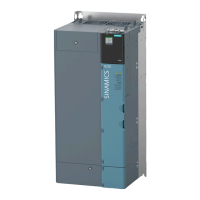
